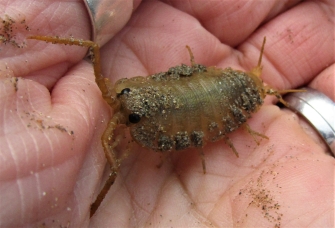

Insects, with spiders
and other creatures
that aren't insects
The strandline is not simply a place where rubbish and seaweed is dumped, it is also a place where creatures hunt and feed. Insects are one of the largest groups that take advantage of what is washed up. In turn, other creatures, such as birds, prey on them.
The strandline provides plenty of places to hide - amongst seaweed, in driftwood and in the holes mades made by sandhoppers so they are ideal hunting grounds for insects.
Sea Slater
Sea slaters look very mmuch like large woodlice, and they are in fact related to woodlice, but neither are actually insects. Instead, they are close cousins of crabs and so have their own page together with a lot of other things which looks like woodlice and so look like insects, but are not.
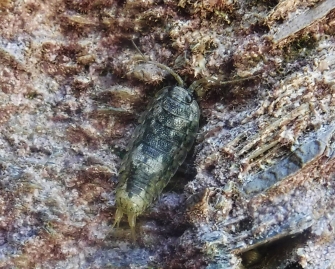
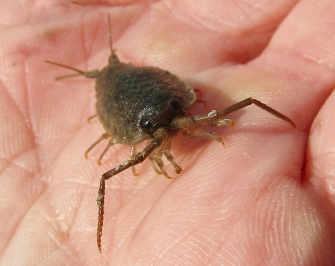
Sandgraver
A matt black beauty! This is a type of coastal ground beetle which can be around 2 cm long. On the strandline they live in seaweed and in driftwood and hunt sandhoppers and isopods (a marine woodlouse). They are nocturnal so we don't often see them during the day.
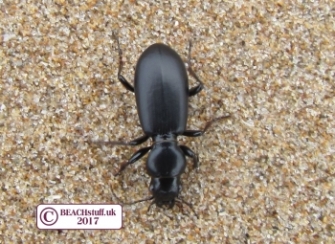
Dune Chafer
This pretty beetle is distinctive because it has golden brown wing cases (covering its back) and a bright metallic green head. The male flies but the female cannot. They are about 1.5 cm long and, on the strandline, feed on rotting vegetation.
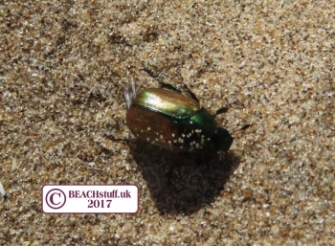
Snail hunter
The narrow head of this type of ground beetle means that it can get right inside a snail shell where it feasts on snail flesh.
Things don't always go to plan though. The video below shows a snail hunter which has itself been caught by its prey. A round-mouthed snail has trapped one of the beetle's legs using its trap door.
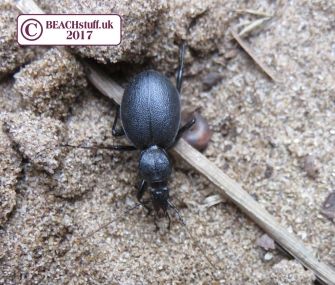
A dung beetle
As the name suggests, they like to feed on dung and so individuals found on the beach may have fallen from nearby dunes. Dung beetles are very important on our sandiest soils as they help to release the nutrients from dung and integrate it into soils making it easier for plants to colonise.
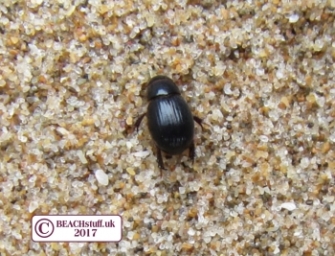
A rove beetle
Rove beetles live in all sorts of different habitats, and this little species (less than 1 cm long) lives on sandy beaches. There it lives amongst seaweed and feeds on whatever insect and decaying matter it can find.
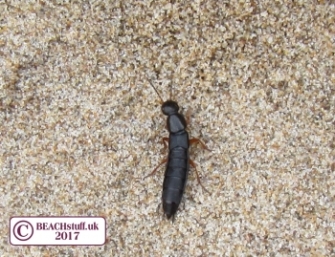
White-legged snake millipede
These millipedes are often found liviing on dunes where they feed on decaying vegetation. Sometimes they stray, or perhaps fall, onto beaches.
See the tracks it makes in the sand here.
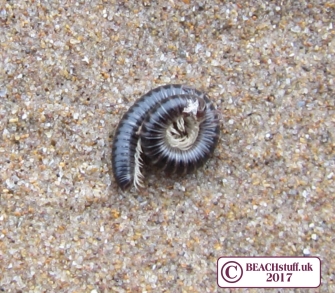
Backswimmer
Backswimmer bugs get their name from their habit of swimming upside down - but they usually swim upside down in inland - non-sea water - canals and ponds so what this one was doing on a beach, I have no idea. Amazingly, it was still alive when I found it.
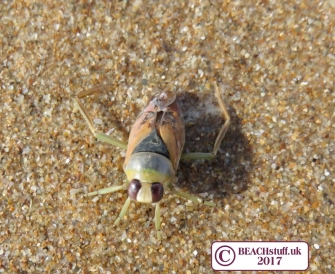
Nursery Web Spider
This spider gets its name from the protective web the female makes to protect her offsprings. They often live in dunes and may stray onto the beach in search of their prey - flies and small insects.

Dune Wolf Spider
The wolf spider feeds on insects and other spiders and comes to the strandline in search of food. They rely on camouflage and this wolf spider on the left was very hard to see on the sand.
The wolf spider below was easier to spot (and you can also see the egg sac she is holding behind her) so probably is a different species of wolf spider (there are many).
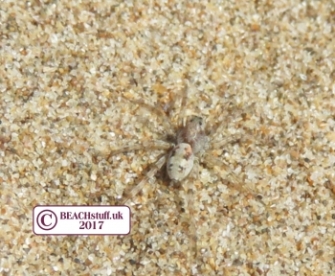
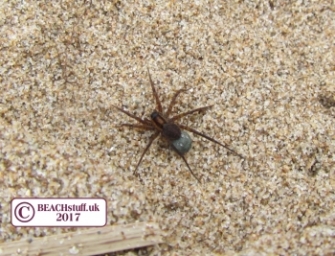
Harvestman
Harvestmen are very commonly seen (with their small round bodies and long thin legs) and commonly mistaken for spiders. They may look like spiders but they are only related, not actual spiders. The harvestman pictured has grabbed a sand hopper (one of their favourite strandline feasts).
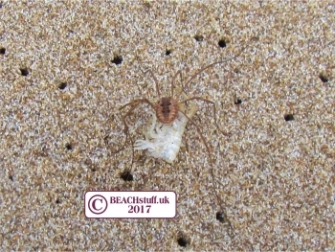
Sand hoppers
Looking for those jumping creatures that we find under heaps of seaweed on the strandline? You can find them here (they might look like insects but they aren't...)
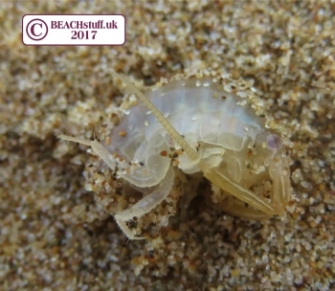
Springtails
These rockpool springtails live on the surface of the water (in large groups) by viirtue of many hairs over their bodies which enable them to float. Depite being springtails, they have no spring in their tails as they are the only springtails that don't leap. they scavenge feed on bits of dead crabs and sea snails. They used to be classfied as insects but are now collembolan.
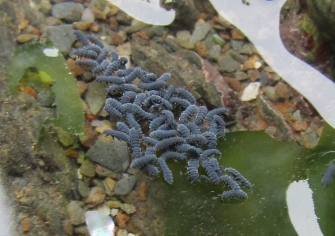
A bee visitor
This small bee was struggling to walk on a wet beach but had left his weaving track for at least a metre when I found him. I put him on a flower so that he could dry out and have a bit of a rest.
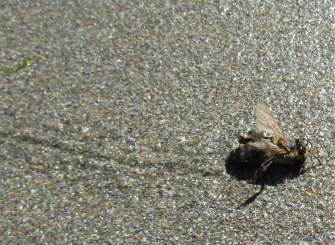
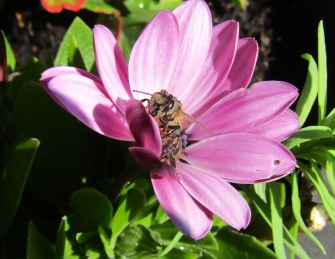
JUST FOR FUN!
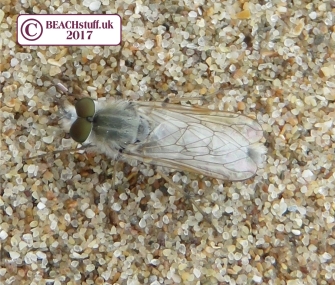
This fly is a common visitor to our strandlines. Anyone want to have a stab at identifying him?
Any ideas to hello@beachstuff.uk. We'll post your ideas here and any relevant photos.






